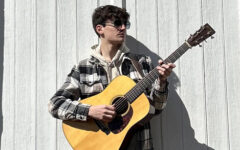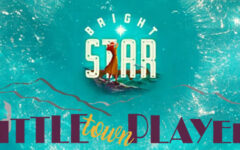 From October 1, 2010 through to the end of September 2011, we will, each day, celebrate the life of Bill Monroe by sharing information about him and those people who are associated with his life and music career. This information will include births and deaths; recording sessions; single, LP and CD release dates; and other interesting tidbits. Richard F. Thompson is responsible for the research and compilation of this information. We invite readers to share any tidbits, photos or memories you would like us to include.
From October 1, 2010 through to the end of September 2011, we will, each day, celebrate the life of Bill Monroe by sharing information about him and those people who are associated with his life and music career. This information will include births and deaths; recording sessions; single, LP and CD release dates; and other interesting tidbits. Richard F. Thompson is responsible for the research and compilation of this information. We invite readers to share any tidbits, photos or memories you would like us to include.
The Music That Matters Part One: Bill Monroe and Ralph Rinzler
by Juli Thanki (November 4, 2009) published in PopMatters
In the late ’30s and ’40s, Bill Monroe and His Blue Grass Boys were the biggest stars in country music, but when he appeared onstage at the 1963 Newport Folk Festival, he did so after a number of years spent toiling in relative obscurity.
The 1963 Newport Folk Festival boasted a roster filled to the brim with up and coming young performers including Bob Dylan, Joan Baez, and Ian and Sylvia. Though the folk music revival was, of course, the main focus of the three-day event, other forms of traditional American music were present as well, including the Delta Blues of Mississippi John Hurt. Next, four men in suits and Stetsons stepped on stage, accompanied by a well-dressed lady lugging a bass fiddle. They were Bill Monroe and His Blue Grass Boys, a group that was once the hottest thing to hit country music since Jimmie Rodgers recorded for RCA in 1927.
But the intervening years since his 1938 big break had not been kind to Monroe. He nearly died in a horrific car accident after being struck by a drunk driver and spent months in recovery, lost two of his best sidemen as they went solo (and achieved far more commercial success than Monroe had), and lost fans to both wild rock ‘n’ roll music as well as the heavily ornamented, pop-flavored “Nashville Sound” era of country music, spearheaded by producers Chet Atkins and Owen Bradley who wanted to erase the hillbilly, honky tonk image of country music and replace it with a refined sound and image that they thought would appeal to citizens in urban and suburban America.
When Monroe appeared onstage at the 1963 Newport Folk Festival, he did so after a number of years spent toiling in relative obscurity, his contributions to the body of American music largely ignored by not only the general public and fans of country music (minus those dedicated souls who turned their radios to the Saturday night broadcast of the Grand Ole Opry, where Bill was still an active participant), but those who considered themselves to be traditional music enthusiasts as well as active participants in the folk revival that occurred during the ‘60s.
In the late ‘30s and ‘40s, Bill Monroe and His Blue Grass Boys were the biggest new stars in country music, having pioneered the hard-driving string band subgenre that eventually came to be known as “bluegrass”, named after the tagline of Monroe’s home state of Kentucky. When two of Monroe’s Blue Grass Boys —guitarist Lester Flatt and banjo revolutionary Earl Scruggs—left Monroe’s band and found considerable commercial and critical success as a duo, many thought that they were the ones who had spearheaded this new form of music; fans were captivated by the sheer skill of Flatt and Scruggs as well as their charming, folksy image—especially in comparison to the haughty Bill Monroe.
Read the full article at www.popmatters.com…
Also, for today there’s a treat with Bill Monroe joined by Vince Gill, Alison Krauss and Ricky Skaggs.







